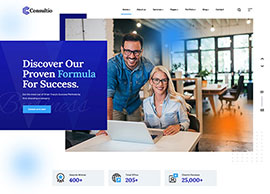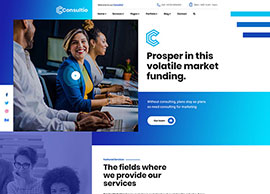The Silent Thief in Your Bank Account: A Complete Guide to Protecting Your Savings from Inflation
You work hard for your money. You diligently save a portion of your salary every month, watching your bank balance grow. But what if I told you that despite your best efforts, your money is losing its value every single day? This isn’t a scam or a market crash; it’s a silent, invisible force called inflation. This guide will teach you exactly what inflation is and, more importantly, how to protect and grow your wealth in spite of it.
Part 1: Understanding the Enemy – What is Inflation?
In the simplest terms, inflation is the rate at which the general level of prices for goods and services is rising, and subsequently, the purchasing power of currency is falling. Your money buys less today than it did yesterday.
The ‘Chai-Samosa’ Example:
Think about a simple pleasure like a cup of chai and a samosa. Ten years ago, you might have paid ₹15 for the pair. Today, the same combination could easily cost you ₹40 or more. The chai and samosa haven’t changed, but the value of the rupee used to buy them has decreased. That’s inflation in action.
In India, inflation is primarily measured by the Consumer Price Index (CPI), which tracks the average change in prices that consumers pay for a basket of common goods and services. When you hear that CPI inflation is at 6%, it means that on average, you need ₹106 to buy the same basket of goods that you could have bought for ₹100 a year ago.
Part 2: The Real Problem – Why Your Savings Account Fails
Most of us believe a savings account is a safe place to keep our money. It’s safe from theft, yes, but it is completely exposed to the silent thief of inflation. This is because the interest you earn is almost always lower than the rate of inflation.
This leads to a negative “real rate of return”. The formula is simple:
Real Rate of Return = Interest Rate – Inflation Rate
| Scenario | Savings Account Interest | Average Inflation Rate | Real Rate of Return | Outcome |
|---|---|---|---|---|
| Typical Year in India | 3.0% | 6.0% | -3.0% | Your money’s purchasing power is decreasing by 3% every year. |
Case Study: Priya’s Dream Vacation
Priya, a 28-year-old marketing manager, wants to go on a European vacation in three years. She estimates the trip will cost ₹3,00,000. She diligently saves ₹1,00,000 per year and keeps it in her savings account, which earns 3% interest per annum.
However, the cost of flights, hotels, and tours also inflates, let’s say at an average of 7% per year. Let’s see what happens.
- Priya’s Savings After 3 Years (with interest): Approx. ₹3,18,545
- Cost of Vacation After 3 Years (with inflation): Approx. ₹3,67,512
The Result: Despite saving more than her initial goal, Priya is now short by nearly ₹50,000! Her savings did not keep pace with the rising costs. This is the harsh reality of relying solely on traditional savings methods.
Part 3: The Battle Plan – Investment Strategies to Beat Inflation
To truly grow your wealth, you must invest in assets whose potential returns are higher than the rate of inflation. Your goal is to achieve a positive real rate of return. Here are some of the most effective investment avenues available to Indian investors.
1. Equity (The Growth Engine)
Owning stocks, or equity, means you own a small piece of a company. As companies grow, they increase the prices of their products and services to keep up with inflation. This leads to higher revenues and profits, which in turn increases the value of the company and its stock price over the long term. Equity has historically provided returns that significantly outpace inflation.
| Metric (Last 10 Years Approximate) | NIFTY 50 Average Annual Return | Average Annual CPI Inflation | Approximate Real Rate of Return |
|---|---|---|---|
| Data | ~12-14% | ~5-6% | ~7-8% |
How to Invest: Direct Stocks vs. Mutual Funds
For beginners, picking individual stocks can be risky and requires extensive research. A far better and more recommended approach is investing through Equity Mutual Funds, especially via a Systematic Investment Plan (SIP).
A SIP allows you to invest a fixed amount of money regularly (usually monthly) into a mutual fund. This provides diversification (your money is spread across many stocks), professional management (by a fund manager), and the benefit of rupee cost averaging.
Case Study: Vikram’s SIP Success
Vikram, 32, started a SIP of ₹10,000 per month in a diversified equity mutual fund 5 years ago. His friend, Alok, decided to put the same amount into a recurring deposit (RD) earning 6% p.a.
- Total Amount Invested by Both: ₹10,000 x 12 months x 5 years = ₹6,00,000
- Alok’s RD Value After 5 Years: Approx. ₹7,00,000
- Vikram’s Mutual Fund Value After 5 Years (assuming 12% avg. return): Approx. ₹8,25,000
The Result: Vikram’s investment not only comfortably beat inflation but also generated ₹1,25,000 more wealth than Alok’s traditional RD. He is on a much faster track to achieving his financial goals.
2. Real Estate (The Tangible Asset)
Real estate is another traditional hedge against inflation. As the cost of living rises, so do property values and rental incomes. Owning a physical property can provide both capital appreciation and a regular income stream that tends to increase over time.
- Pros: Tangible asset, potential for rental income, social status.
- Cons: High initial investment, low liquidity (cannot be sold quickly), high transaction costs, requires active management.
3. Gold (The Safe Haven)
Gold has been considered a store of value for centuries. When inflation is high and confidence in currency is low, investors often flock to gold, pushing its price up. It acts as a reliable hedge in an uncertain economic environment.
Modern Ways to Invest in Gold:
- Gold ETFs (Exchange Traded Funds): Invest in gold electronically, just like a stock. High liquidity, no storage hassles.
- Sovereign Gold Bonds (SGBs): Issued by the RBI on behalf of the government. They track the price of gold AND pay an additional 2.5% interest per year. The capital gains on maturity are also tax-free. For long-term investors, SGBs are arguably the best way to invest in gold in India.
Part 4: Building Your Anti-Inflation Portfolio
The solution isn’t to pick just one of the above assets. The key to successful long-term investing is diversification and asset allocation. This means creating a balanced portfolio with a mix of different asset classes to manage risk.
For a beginner in their late 20s or early 30s with a moderate risk appetite, a simple anti-inflation portfolio could look something like this:
| Asset Class | Allocation % | Primary Role in Portfolio | Recommended Instrument |
|---|---|---|---|
| Indian Equity | 60% | High Growth Engine | Diversified Equity Mutual Funds (via SIP) |
| Gold | 15% | Inflation Hedge / Safety Net | Sovereign Gold Bonds (SGBs) |
| Debt Instruments | 25% | Stability & Liquidity | Public Provident Fund (PPF), High-Quality Corporate Bonds |
The Cost of Waiting: Amit vs. Sumit
Let’s see the magic of starting early. Both Amit and Sumit want to build a retirement corpus and their investments generate an average of 12% annually.
- Amit starts at age 25. He invests ₹5,000 per month for 35 years until he is 60.
- Sumit starts at age 35. He invests ₹10,000 per month (double of Amit) for 25 years until he is 60.
The Result at Age 60:
- Amit’s Total Investment: ₹21 Lakhs. His Corpus: ~₹3.24 Crores!
- Sumit’s Total Investment: ₹30 Lakhs. His Corpus: ~₹1.89 Crores!
Even though Sumit invested more money overall, Amit’s wealth is almost double. This isn’t magic; it’s the power of compounding. The best time to start fighting inflation was yesterday. The next best time is today.
Part 5: Conclusion – Taking Control of Your Financial Future
Inflation is an unavoidable economic reality. Leaving your money idle is a guaranteed way to lose purchasing power. The only way to win this race is to become an investor. By understanding the tools at your disposal—like equity mutual funds and sovereign gold bonds—and by building a diversified portfolio, you can transform money from a tool that simply buys things into a powerful engine that works for you, day and night.
You are now equipped with the knowledge to not just protect your savings, but to build a secure and prosperous financial future. The journey from a saver to an investor is the most important financial step you will ever take.














































